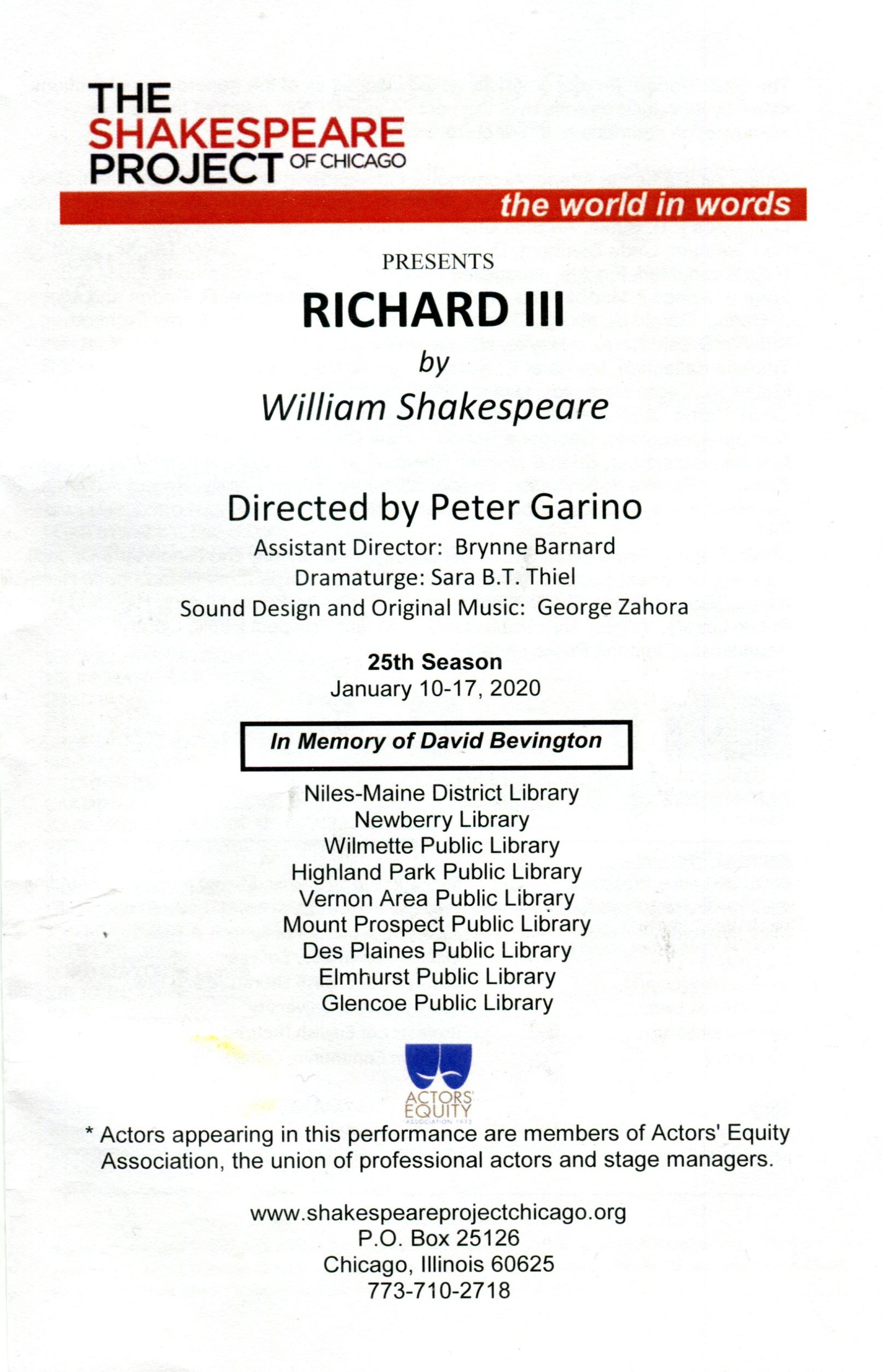In our lifetime, only five years ago, Richard III got a spiffy tomb at Leicester Cathedral, after centuries in an anonymous grave not far away. That came to mind when Ann and I went into the city on Saturday to see a reading of Richard III at the Newberry Library.
 It was the same setup as last year, when we saw Titus Andronicus: actors reading their parts, holding scripts, while moving around one of the library’s large rooms, in front of and to the side of the audience. Outside wind blew and rain fell, just above freezing, so that might account for the slightly smaller crowd than last year, but even so a lot of people came out for the tale of murder, intrigue, more murder, double-dealing and a violent denouement. Everything you need in an Elizabethan history play.
It was the same setup as last year, when we saw Titus Andronicus: actors reading their parts, holding scripts, while moving around one of the library’s large rooms, in front of and to the side of the audience. Outside wind blew and rain fell, just above freezing, so that might account for the slightly smaller crowd than last year, but even so a lot of people came out for the tale of murder, intrigue, more murder, double-dealing and a violent denouement. Everything you need in an Elizabethan history play.
Very talented actors, so the lack of any set or costumes didn’t matter. Christopher Prentice, who played Richard, did the demented villain to just the right pitch, and moved himself in ways that didn’t exactly suggest a hunchback, but weren’t quite normal either, and strangely menacing.
One more thing. Here’s the mission statement of the Richard III Society, which was instrumental in finding the king’s bones in our time: “In the belief that many features of the traditional accounts of the character and career of Richard III are neither supported by sufficient evidence nor reasonably tenable, the Society aims to promote, in every possible way, research into the life and times of Richard III, and to secure a reassessment of the material relating to this period, and of the role of this monarch in English history.”
I’m all for historical inquiry, but even so — Richard III gets to be a villain. The literary Richard III is more robust than any historic portrait of him is ever likely to be.